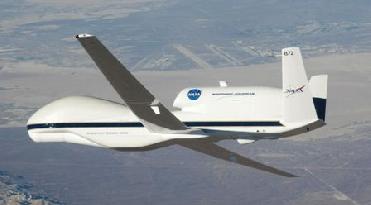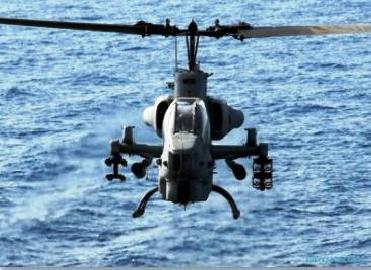
The Global Hawk can fly autonomously to altitudes above 60,000 feet -- roughly twice as high as a commercial airliner -- and as far as 11,000 nautical miles. Photo: NASA
WASHINGTON (BNS): NASA has successfully completed the first science flight of the Global Hawk unpiloted aircraft system over the Pacific Ocean.
The flight was the first of five scheduled for this month's Global Hawk Pacific, or GloPac, mission to study atmospheric science over the Pacific and Arctic oceans.
The Global Hawk is a robotic plane that can fly autonomously to altitudes above 60,000 feet -- roughly twice as high as a commercial airliner -- and as far as 11,000 nautical miles, which is half the circumference of Earth.
"The Global Hawk is a revolutionary aircraft for science because of its enormous range and endurance. This mission is our first opportunity to demonstrate the unique capabilities of this plane, while gathering atmospheric data in a region that is poorly sampled, �Paul Newman, co-mission scientist for GloPac and an atmospheric scientist from NASA's Goddard Space Flight Center in Greenbelt, Md, said in a NASA news release.
GloPac researchers plan to directly measure and sample greenhouse gases, ozone-depleting substances, aerosols, and constituents of air quality in the upper troposphere and lower stratosphere. GloPac's measurements will cover longer time periods and greater geographic distances than any other science aircraft, the release said.
The flight lasted for 14 hours and flew up to 60,900 feet, approximately 4,500 nautical miles along a flight path that took it to 150.3 degrees West longitude, and 54.6 degrees North latitude, just south of Alaska's Kodiak Island.
Although the plane is designed to fly on its own, pilots can change its course or altitude based on interesting atmospheric phenomena ahead. Researchers have the ability via communications links to control their instruments from the ground.
"The Global Hawk is a fantastic platform because it gives us expanded access to the atmosphere beyond what we have with piloted aircraft," NASA release quoted David Fahey, co-mission scientist and a research physicist at NOAA's Earth System Research Laboratory in Boulder, Colo, as saying.
"We can go to regions we couldn't reach or go to previously explored regions and study them for extended periods that are impossible with conventional planes," he added.
Scientists also expect to gather high-altitude data between 45,000 and 65,000 feet, where many greenhouse gases and ozone-depleting substances are destroyed. They will measure dust, smoke and pollution that cross the Pacific from Asia and Siberia and affect U.S. air quality.
The Global Hawk will make several flights directly under the path of NASA's Aura satellite and other "A-train" Earth-observing satellites, "allowing us to calibrate and confirm what we see from space," Newman added.
 Previous Article
Previous Article Next Article
Next Article











The Indian Air Force, in its flight trials evaluation report submitted before the Defence Ministry l..
view articleAn insight into the Medium Multi-Role Combat Aircraft competition...
view articleSky enthusiasts can now spot the International Space Station (ISS) commanded by Indian-American astr..
view article